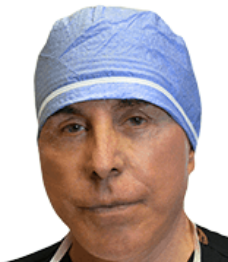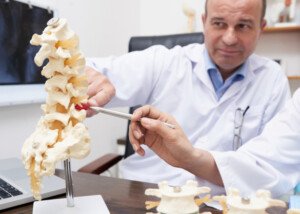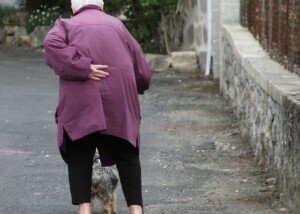
It seems that the logical treatment for spinal stenosis is to repeatedly extend the back throughout the day or do sustained back extension exercises to “force” the lumbar region into a more upright position.
But the issue with spinal stenosis isn’t as simple as “straighten your back when you walk!”
Stenosis is an abnormal narrowing of a body part. In the case of spinal stenosis, the canal through which the spinal cord runs is narrowed due to pathology.
The pain causes the patient to stoop forward when standing or walking. The stooping may be subtle to quite severe.
However, the patient is often able to lie on a hard straight mattress without any problem.
So why must they bend forward (flexion) when standing and especially when walking?
Shouldn’t they make efforts to “stand straight!” or “stop hunching” when they walk?
“No, it’s the opposite,” says Alfred O. Bonati, MD, owner of The Bonati Institute, a world leader in advanced spine surgery, Hudson, FL.
“An individual with spinal stenosis has a nerve, or the spinal cord depending on the level, being pinched and creating a deficit,” continues Dr. Bonati.
“The more exercise [back extension] being done, the more damage they are going to do to the nerve or spinal cord depending on level of stenosis.”
Symptoms of Spinal Stenosis
Not all people with this condition have discomfort, while others have pain, numbness, tingling and/or weakness.
Though spinal stenosis can occur in the neck, the type that occurs in the lower back (lumbar area) is what causes people to bend forward while on their feet.
The pain is often in the legs or feet, and bending forward relieves it.
Treatment
In severe cases, treatment requires surgery. But non-surgical treatment includes painkillers and physical therapy – along with the conscious and sometimes subconscious adaptation of stooping or “hunching” forward when walking (or standing).
Inertia is not recommended, as this will lead to muscle weakness, which will then lead to more pain.
Other treatments may be steroid injections, decompression (if the cause is a thickened ligament in the spine), chiropractic, massage and acupuncture.
Just because back extension is not recommended (such as what’s often done in yoga classes) doesn’t mean that people with spinal stenosis can’t do strength training, aerobic exercise or, of course, yoga (with modifications).
Many forms of exercise do not involve back extension. Patients should speak to their doctor about exercise restrictions.










































